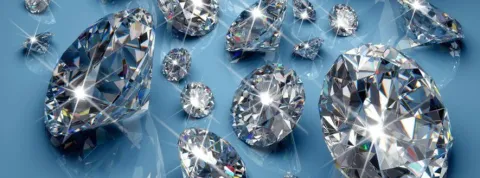
Synthetic diamonds: an innovation in the spotlight
As the figurehead of many creations, sparkling on jewelry sets, king of engagement rings, the diamond has always been a stone highly prized by the jewelry industry. But, in recent years, the codes have changed with the arrival of synthetic diamonds directly from high technology. Surprising innovation, opening of new markets, light on a novelty which shakes the tradition of the high jewelry and luxury.
Innovation and ethics
This is the novelty that is the talk of the town. If fashion, watchmaking or art have their share of technological innovation (both in terms of production and distribution), jewelry is no exception when it comes to evolution. The proof is in the synthetic diamond: an artificial stone, designed in a laboratory, absolutely similar to the real diamond from a gemological point of view.
At the heart of this process are two methods:
The first is to place a tiny grain of diamond in the center of a press and subject it to extreme pressure and a temperature of about 1500 degrees. This process aims to aggregate the carbon atoms around the diamond grain and make it grow for several weeks. A very slow process that reproduces the conditions of natural diamond creation.
The second technique is called CVD (Chemical Vapor Deposition). It allows carbon atoms to crystallize to become diamond. This crystallization takes place in a low pressure atmosphere via hydrogen in a plasma state.
Cultured diamonds are of increasing interest to the jewelry industry as well as a new clientele. In 2018, De Beers (number 1 in the world) made a splash by launching its own brand of synthetic diamond jewelry.
Indeed, in addition to these production techniques respecting the 4C rule specific to diamonds - namely: color, cut, carat and clarity, these stones claim other strong arguments. The first is the price, which is 30 to 50% less expensive than natural diamonds. A revolutionary positioning and a lower price that reflects lower production costs. Other arguments in favor of these diamonds of culture: the ecological and social questions. Indeed, their production would be less polluting and very respectful from an ethical point of view, far from the harmful image of "blood diamonds" and excessive extractions.
As Thibaut de La Rivière, director of Sup de Luxe, points out:
"This ethical and ecological alternative is particularly appealing to millennials, who are very sensitive to traceability and social issues, as well as to the price/quality ratio." Faced with this craze, more and more jewelry houses are opting for high jewelry collections made entirely of these high-tech diamonds. Technological prowess, attractive price, responsible commitment... Does this synthetic stone have everything going for it?
A smell of discord
For many big names in jewelry, the arrival of this laboratory stone is to be taken with a certain distance. The traditional industry claims the notion of rarity specific to natural diamonds. Some experts simply conclude that the positioning of synthetic diamonds on the traditional market is not the same.
The two camps also clash on the ground of sustainability: extraction for one and production for the other, some evoke an industrialization of the production of synthetic diamonds, even comparing them to costume jewelry.
So, strict separation or mutualization of the stakes, it is still difficult to anticipate the rise of these precious stones of a new kind but, one thing is sure, the diamond has not finished shining in the spotlight.
